A. E. Ulanov
Russian Quantum Center
Reinforcement Learning Enhanced Quantum-inspired Algorithm for Combinatorial Optimization
Feb 14, 2020
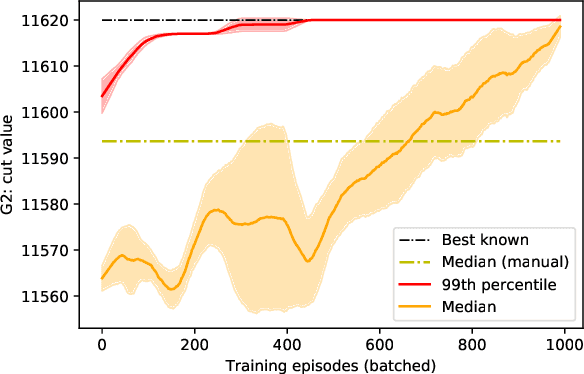

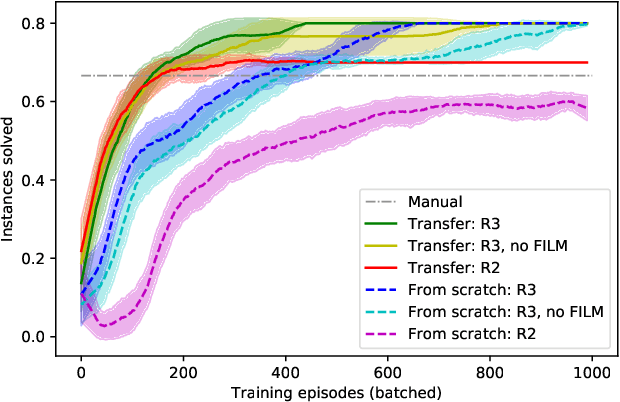
Abstract:Quantum hardware and quantum-inspired algorithms are becoming increasingly popular for combinatorial optimization. However, these algorithms may require careful hyperparameter tuning for each problem instance. We use a reinforcement learning agent in conjunction with a quantum-inspired algorithm to solve the Ising energy minimization problem, which is equivalent to the Maximum Cut problem. The agent controls the algorithm by tuning one of its parameters with the goal of improving recently seen solutions. We propose a new Rescaled Ranked Reward (R3) method that enables stable single-player version of self-play training that helps the agent to escape local optima. The training on any problem instance can be accelerated by applying transfer learning from an agent trained on randomly generated problems. Our approach allows sampling high-quality solutions to the Ising problem with high probability and outperforms both baseline heuristics and a black-box hyperparameter optimization approach.
Experimental quantum homodyne tomography via machine learning
Aug 01, 2019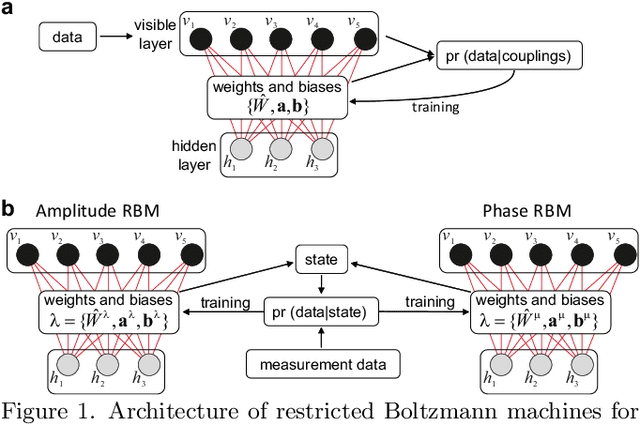
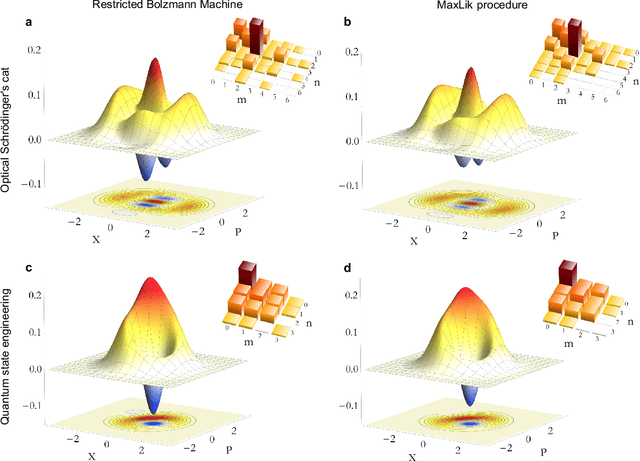
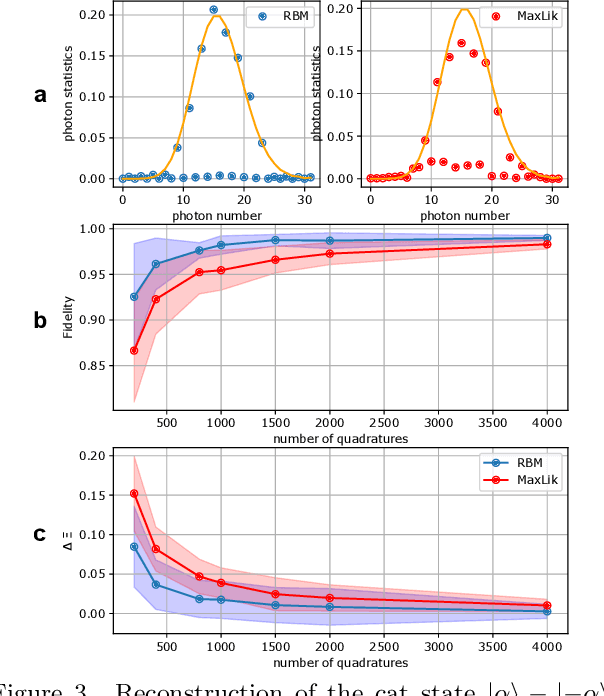
Abstract:Complete characterization of states and processes that occur within quantum devices is crucial for understanding and testing their potential to outperform classical technologies for communications and computing. However, solving this task with current state-of-the-art techniques becomes unwieldy for large and complex quantum systems. Here we realize and experimentally demonstrate a method for complete characterization of a quantum harmonic oscillator based on an artificial neural network known as the restricted Boltzmann machine. We apply the method to optical homodyne tomography and show it to allow full estimation of quantum states based on a smaller amount of experimental data compared to state-of-the-art methods. We link this advantage to reduced overfitting. Although our experiment is in the optical domain, our method provides a way of exploring quantum resources in a broad class of large-scale physical systems, such as superconducting circuits, atomic and molecular ensembles, and optomechanical systems.
 Add to Chrome
Add to Chrome Add to Firefox
Add to Firefox Add to Edge
Add to Edge